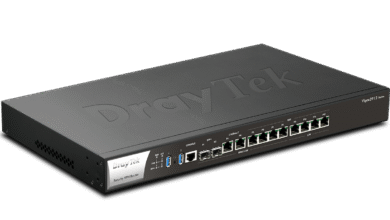Microsoft Patches Critical Kerberos ‘BadSuccessor’ Flaw (CVE-2025-53779)

▼ Summary
– Microsoft’s August 2025 Patch Tuesday addressed over 100 vulnerabilities, including a critical Kerberos flaw (CVE-2025-53779) enabling privilege escalation via a BadSuccessor attack.
– The Kerberos vulnerability exploits Windows Server 2025’s dMSA feature, potentially granting domain admin privileges, though exploitation is currently deemed “less likely.”
– High-priority patches include CVE-2025-49712 (SharePoint RCE) and Office RCE flaws (CVE-2025-53731, CVE-2025-53740), with experts urging immediate action due to exploit risks.
– CVE-2025-53766 (GDI+ buffer overflow) and CVE-2025-53778 (NTLM privilege escalation) were highlighted as vulnerabilities requiring prompt patching, despite varying exploitation likelihoods.
– CVE-2025-53786, a severe Exchange hybrid flaw, demands manual configuration steps beyond patching to prevent cloud-environment breaches, per CISA’s emergency directive.
Microsoft’s latest security updates address over 100 vulnerabilities, including a critical Kerberos flaw that could allow attackers to gain domain administrator privileges. The August 2025 Patch Tuesday release fixes multiple high-risk issues across Windows, Office, and Exchange systems, with some requiring immediate attention despite Microsoft’s assessment of lower exploitation likelihood.
One of the most notable vulnerabilities, CVE-2025-53779 (dubbed “BadSuccessor”), targets Windows Kerberos and exploits the delegated Managed Service Account (dMSA) feature in Windows Server 2025. Discovered by Akamai researcher Yuval Gordon, this flaw enables an attacker with network access to escalate privileges within Active Directory (AD). While Microsoft acknowledges the risk, they classify exploitation as “less likely” due to the limited adoption of Windows Server 2025 in AD environments, currently affecting only 0.7% of domains.
Security experts warn that other flaws demand faster action. CVE-2025-49712, a deserialization vulnerability in SharePoint, poses a serious threat when combined with authentication bypass techniques. Saeed Abbasi from Qualys emphasizes that attackers could leverage this flaw for remote code execution (RCE), leading to full server compromise. Organizations are urged to patch SharePoint immediately, rotate encryption keys, and restrict internet-facing access to prevent exploitation.
Two additional Microsoft Office RCE vulnerabilities (CVE-2025-53731 and CVE-2025-53740) continue a troubling trend, exploits via the Preview Pane. Dustin Childs of Trend Micro’s Zero Day Initiative notes this marks the seventh consecutive month with Preview Pane-related flaws, suggesting attackers are targeting overlooked code segments. He advises temporarily disabling the feature while Microsoft works on a permanent solution.
Another critical issue, CVE-2025-53766, involves a heap-based buffer overflow in Windows GDI+, a graphics rendering component. Attackers could exploit this by tricking users into opening malicious documents or by uploading crafted files to web services. Though Microsoft rates exploitation as unlikely, Childs highlights past instances of malicious ads exploiting similar flaws, making this patch a priority.
On the higher-risk end, CVE-2025-53778, an NTLM privilege escalation bug, has been flagged as more likely to be exploited due to its low attack complexity. Meanwhile, CVE-2025-53786, a severe Exchange hybrid deployment flaw, has prompted CISA to issue emergency guidance. Ben McCarthy from Immersive warns that unpatched systems could allow attackers to pivot from on-premises servers to Microsoft 365 cloud environments, gaining administrative control. Resolving this requires not just patching but also reconfiguring service principals to limit permissions.
With threats evolving rapidly, organizations must prioritize these updates to mitigate risks. Delaying patches could leave systems exposed to lateral movement, data theft, and regulatory penalties. Stay ahead by subscribing to security alerts for real-time updates on emerging threats.
(Source: HelpNet Security)





